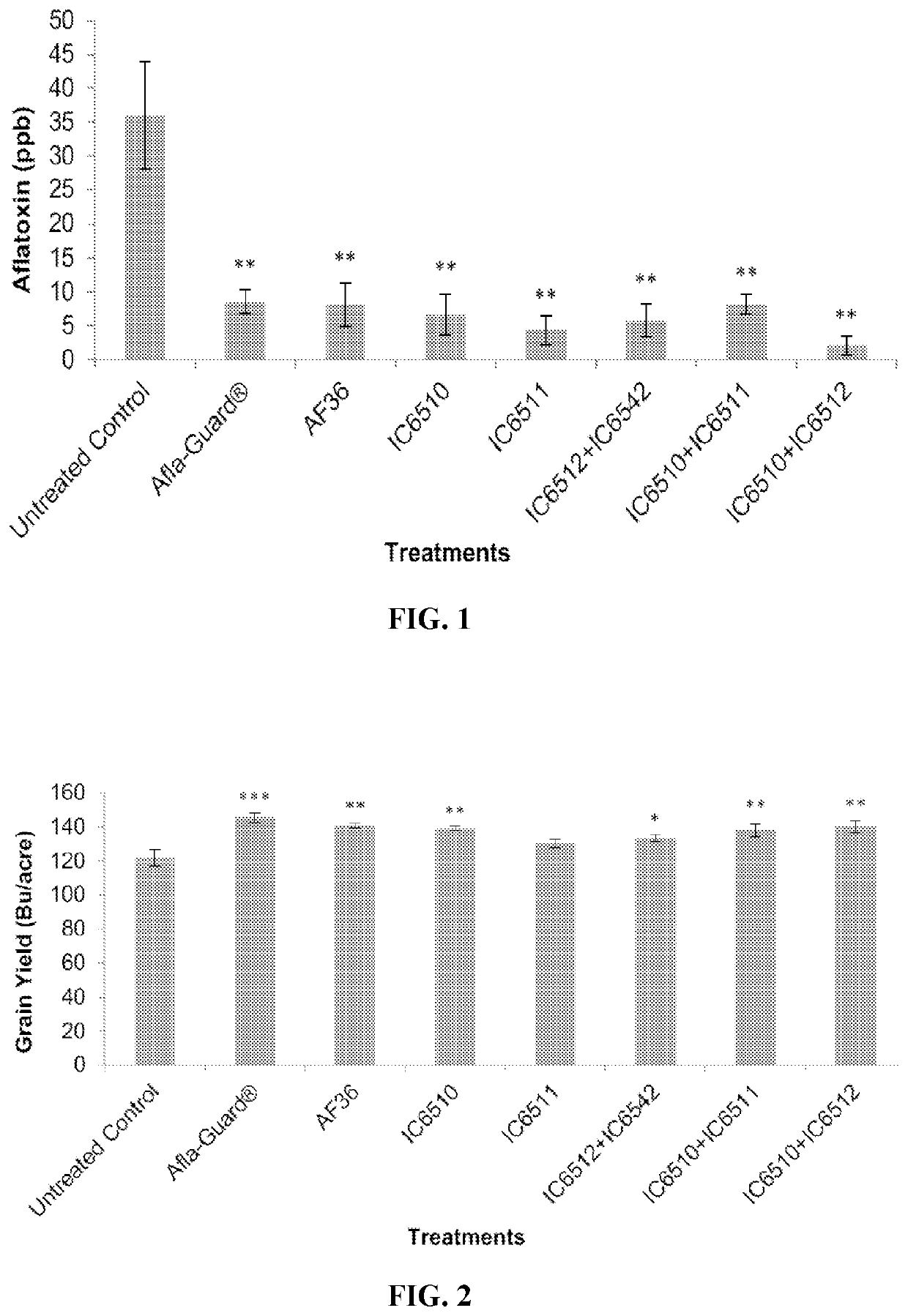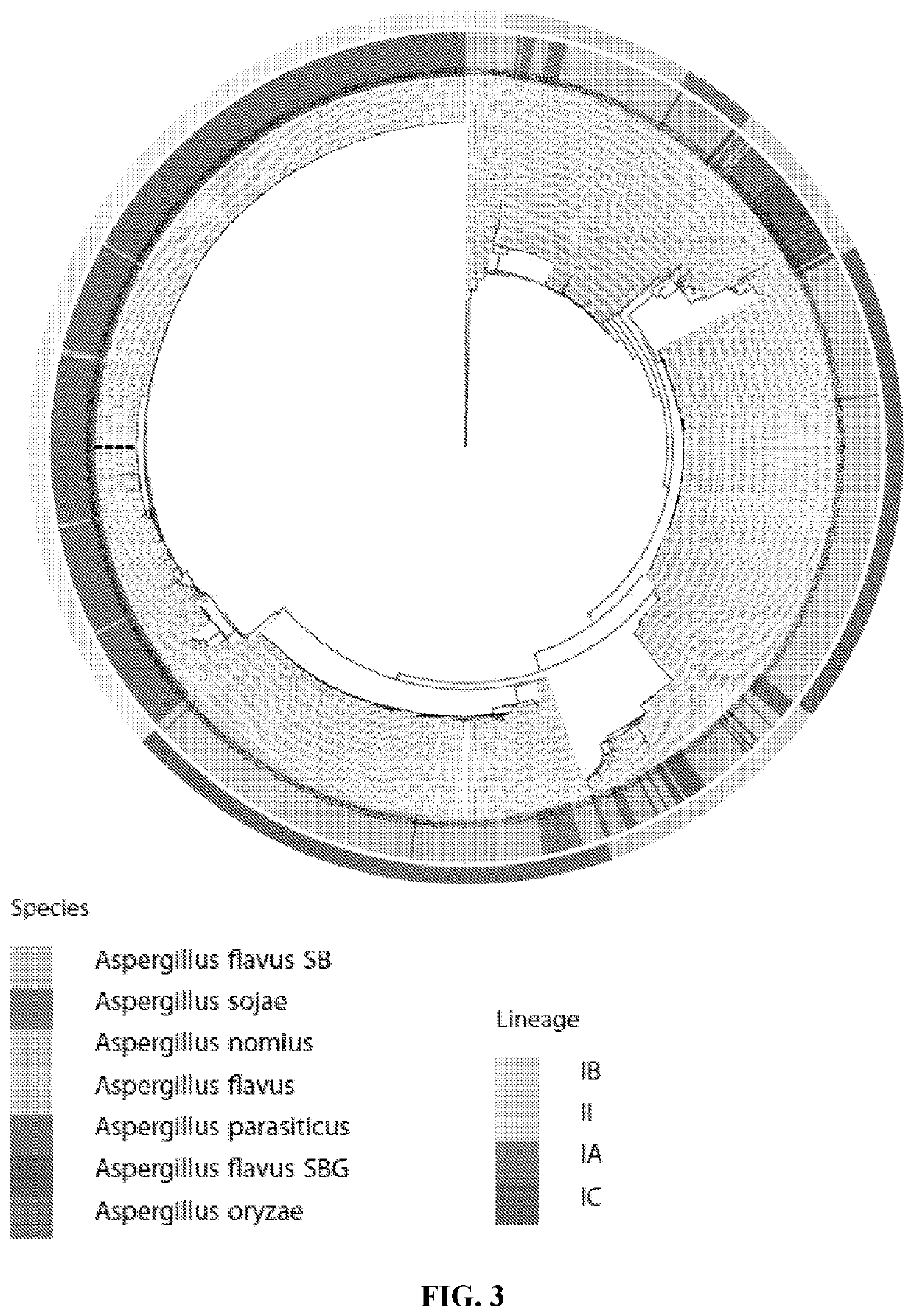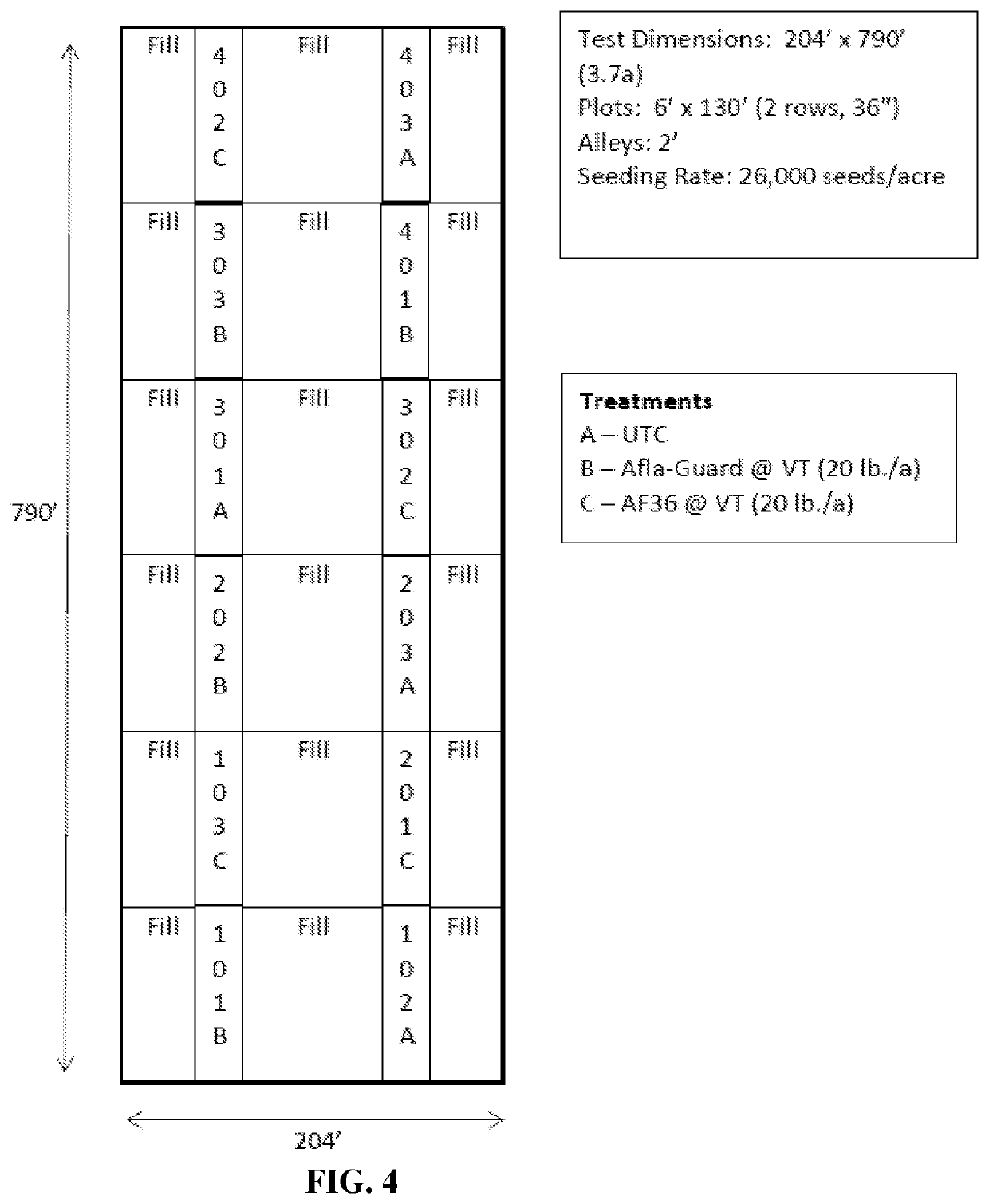A population genetics approach to biological control of mycotoxin production
a population genetics and biological control technology, applied in the field of biological control of mycotoxin production, can solve the problems of toxins posing significant health risks to both humans and animals, and achieve the effect of reducing mycotoxin production
- Summary
- Abstract
- Description
- Claims
- Application Information
AI Technical Summary
Benefits of technology
Problems solved by technology
Method used
Image
Examples
example 1
[0125]Aspergillus flavus is a common cause of pre-harvest and post-harvest diseases on maize in the southeastern United States. A. flavus produces aflatoxin and cyclopiazonic acid during the development and post-harvest storage of corn. Aflatoxins have been shown to have acute hepatotoxic and immunosuppressive properties and are strictly regulated by the Food and Drug Association in the United States (Horn, et. al 2014).
[0126]Aflatoxins were discovered after an outbreak of Turkey X disease led to the screening of turkey feed for toxic compounds (Wogan, 1996). There are four main aflatoxins: B1, B2, G1, and G2, which have slightly different chemical structures. A. flavus produces aflatoxin B1 on corn; this mycotoxin is the most potent naturally occurring carcinogen known (Moore, et. al 2014). Aflatoxins produced by A. flavus are the second leading cause of aspergillosis in humans. Due to the risks aflatoxin pose to both human and animal health, the FDA regulates that grain contaminat...
example 2
ic Fungal Strains
[0138]Homothallic fungi, which can outcross and which have low toxigenicity or are atoxigenic, may be useful in biocontrol compositions for reducing mycotoxin production in a field population of toxin producing fungi. The homothallic fungi maybe used alone or in combination with the heterothallic fungi as described herein.
TABLE 1Self-fertility and outcrossing of homothallicAspergillus flavus IC899 strainMAT1-1MAT1-2# sclerotia examined% with ascosporesIC899*53394.5 ± 4.32IC899IC117981 36.7 ± 16.40IC899IC25860047.8 ± 4.01IC899IC30718595.1 ± 1.61IC899IC29012157.3 ± 3.34*IC899 has both MAT1-1 and MAT1-2 mating types and is self-fertile
[0139]Aspergillus flavus strain (IC899) was crossed in the laboratory with itself and with heterothallic strains, either MAT1-2 (shown in Table 1) or MAT1-1 (data not shown). The degree of fertility was estimated by calculating the percentage of sclerotia with ascospore-bearing ascocarps. The high fertility observed from the self-cross in...
example 3
actors Influencing the Efficacy and Persistence of Biocontrol of Aflatoxin Contamination in Maize
[0140]A large acreage of maize grown in the southern United States is chronically at risk of aflatoxin contamination caused by Aspergillus flavus. Biocontrol treatments using atoxigenic strains of A. flavus can reduce contamination by up to 95%. Commercial biocontrol strains are of the mating type MAT1-2 and are applied annually for effective performance. Currently, there is interest in the development of sustainable biocontrol approaches to successfully reduce aflatoxin contamination. First, we examined the efficacy of RMb10, a novel biocontrol strain of the MAT1-1 type (same lineage as Afla-Guard strain but with a different mating type), in replicated large-scale field trials in AL, MS, NC, and TX from 2016 to 2018. Second, we investigated the genetic factors that may influence the persistence of biocontrol strains in the field. Isolates (n=300) of A. flavus were collected from specifi...
PUM
 Login to View More
Login to View More Abstract
Description
Claims
Application Information
 Login to View More
Login to View More - R&D
- Intellectual Property
- Life Sciences
- Materials
- Tech Scout
- Unparalleled Data Quality
- Higher Quality Content
- 60% Fewer Hallucinations
Browse by: Latest US Patents, China's latest patents, Technical Efficacy Thesaurus, Application Domain, Technology Topic, Popular Technical Reports.
© 2025 PatSnap. All rights reserved.Legal|Privacy policy|Modern Slavery Act Transparency Statement|Sitemap|About US| Contact US: help@patsnap.com



